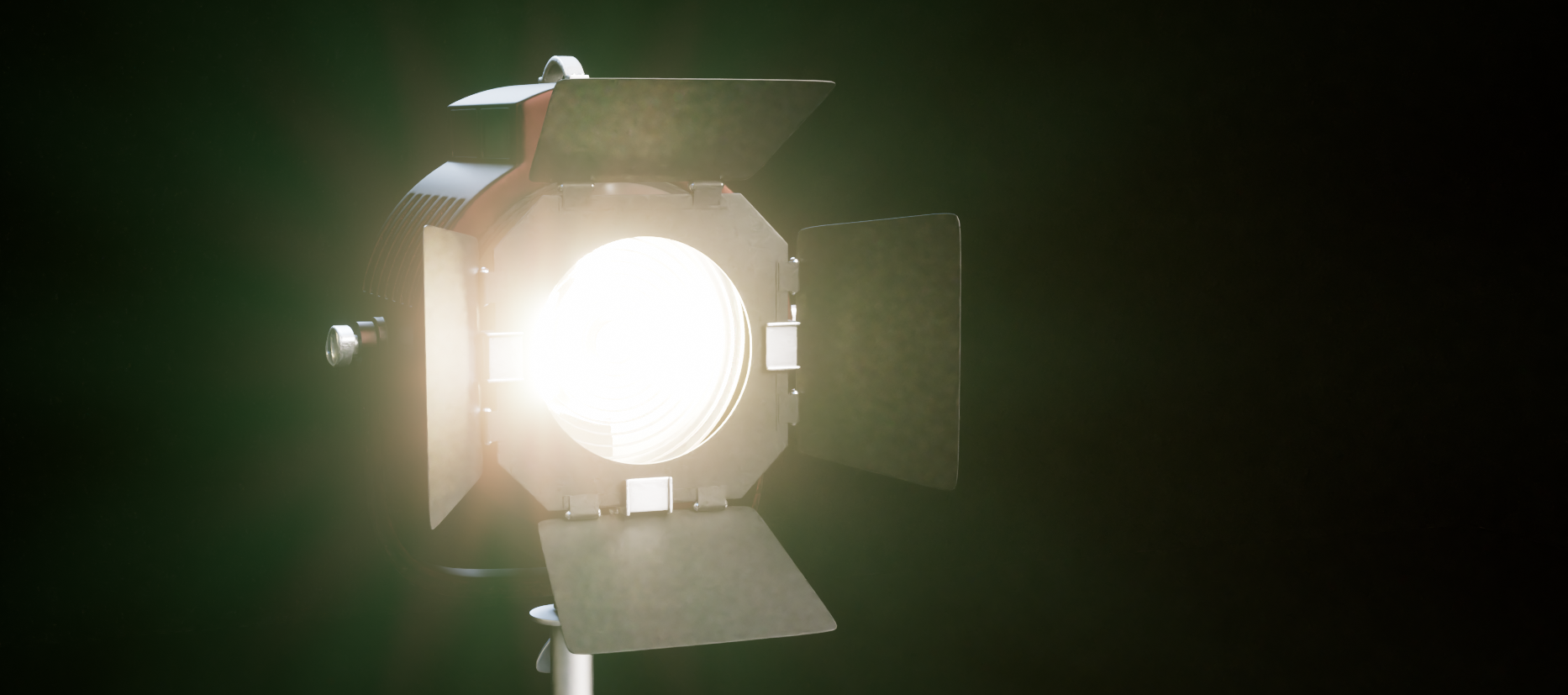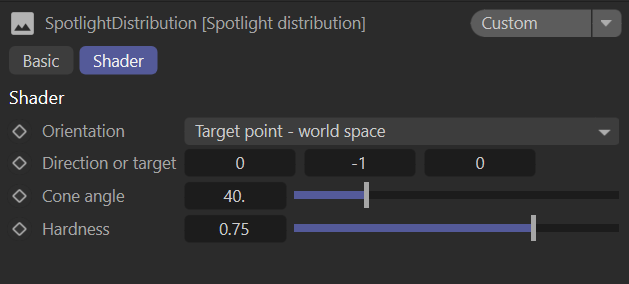Spotlight Distribution
The Spotlight Distribution node can be used with an Octane Arealight or as part of an emission material on a polygon to create a realistic spotlight behavior. Note that the Octane Spotlight, discussed here, approximates an "out of the box" spotlight effect, with a preset scattering volume and does not use the Spotlight Distribution node.

In both the Texture Emission and Blackbody Emission nodes is a distribution slot, which is used to control the pattern of the emitted light. This can be set to a Grayscale or RGB image to load an Image Texture or an IES file. The Spotlight Distribution node is added to the Distribution slot in the Emission Node or the Octane Light tag (discussed here) applied to a suitable area light.
|
|
spotlight distribution node
|
The Spotlight Distribution Node consists of four controls:
- Orientation — Determines where/how the spotlight will be pointed, based upon the following options:
- Surface Normal — For flat emission objects, such as quads and Octane area lights, the direction of the light will always be the same as the surface normal of the emitter.
- Direction - world space — A direction in world space, overrides the emitter orientation. Best used for rounder surfaces.
- Direction - object space — A direction in object space, overrides the emitter orientation. Best used for rounder surfaces.
- Target point - world space — An actual point in world space; overrides the emitter orientation. A scene object can be used as a target with some XPresso.
- Target point - object space — An actual point in object space, overrides the emitter orientation. A scene object can be used as a target with some XPresso.
- Direction or Target — The direction of the light or the target object.
- Cone Angle — The angle of the actual cone. Smaller values produce a tighter cone.
- Hardness — Sets the hardness of the penumbra (cone) boundaries. Lower values produce a softer look.

